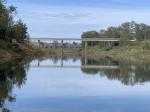| Recent Pictures (List All) | |||
 Rating: (None) Views: 34 Comments (0) |
 Rating: (None) Views: 37 Comments (0) |
 Rating:     Views: 37 Comments (4) |
 Rating: (None) Views: 25 Comments (0) |
|
Pages: [1] Go Down
0 Members and 1 Guest are viewing this topic. Pages: [1] Go Up
|
||||||||||||||||||||||||||||||



 3 Likes
3 Likes


